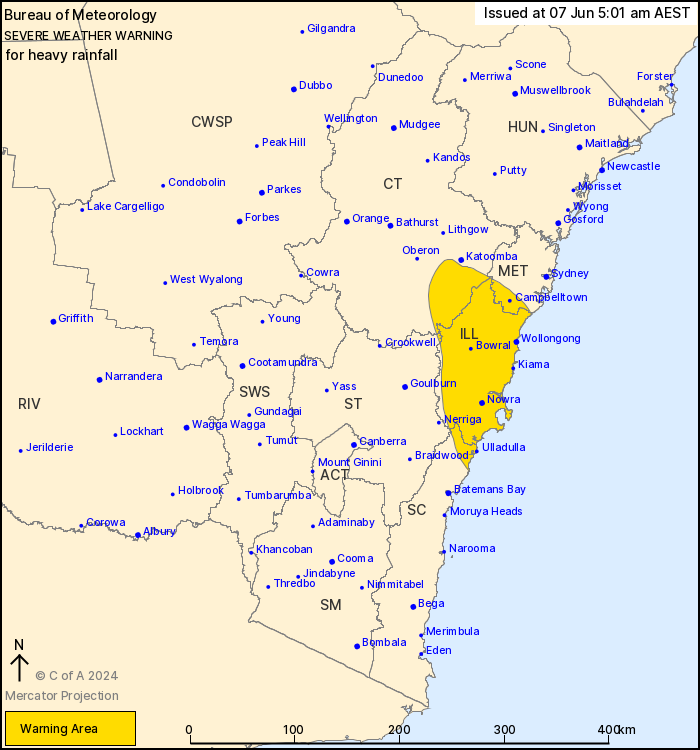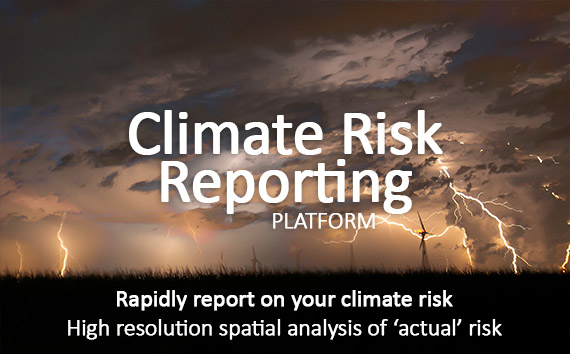Source: Bureau of Meteorology
For people in Illawarra and parts of Metropolitan, South Coast,
Central Tablelands and Southern Tablelands Forecast
Districts.
Issued at 5:01 am Friday, 7 June 2024.
Heavy rainfall to continue over the Illawarra and surrounds,
contracting southwards during the day.
Weather Situation: A surface trough extending near the coast with
moist onshore flow has been generating areas of heavy rainfall. The
trough is expected to slip southwards and weaken with rain areas
contracting to Illawarra and South Coast later today, before easing
tonight.
HEAVY RAINFALL which may lead to FLASH FLOODING is likely to
continue for the Illawarra, parts of the South Coast, and southern
areas of Central Tablelands and Metropolitan, during the morning.
Scattered six-hourly rainfall totals between 40 and 60 mm are
likely with isolated totals around 100 mm possible. Scattered
24-hourly rainfall totals between 75 and 100 mm are also likely
with isolated totals around 130 mm possible.
Heavy rainfall likely to contract to mostly the Illawarra coastal
areas and northern parts of the South Coast during the day.
Flood Watch is current for parts of the Central Coast, Sydney
Metropolitan Area, Illawarra and South Coast while various Flood
Warnings are also current. Please refer to
http://www.bom.gov.au/nsw/warnings/
Locations which may be affected include Wollongong, Nowra, Bowral,
Campbelltown, Huskisson and Ulladulla.
Significant rainfall totals in the 19 hours (9am Thursday to 5am
Friday AEST) include:
206 mm at Cringila
197 mm at Port Kembla
170 mm at Warilla
146 mm at Wollongong
113 mm at Yalwal
116 mm at Kiama
104 mm at Moss Vale
99 mm at Bellambi
79 mm at Nowra
57mm at Sydney
The State Emergency Service advises that people should:
* Don't drive, ride or walk through flood water.
* Keep clear of creeks and storm drains.
* If you are trapped by flash flooding, seek refuge in the highest
available place and ring 000 if you need rescue.
* Be aware that run-off from rainfall in fire affected areas may
behave differently and be more rapid. It may also contain debris
such as ash, soil, trees and rocks.
* After bushfires, heavy rain and the loss of foliage can make the
ground soft and heavy, leading to a greater chance of
landslides.
* Stay vigilant and monitor conditions. Note that the landscape
may have changed following bushfires.
* For emergency help in floods and storms, ring your local SES
Unit on 132 500.

06/Jun/2024 08:15 PM



